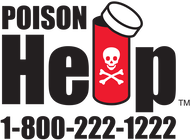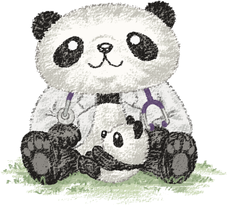|
Most are due to a viral infection and are part of a cold. Keep in mind that coughing clears the lungs and protects them.
Use cough drops for children over 4 years old and warm liquids, like chicken broth for children over 1 year of age. We generally avoid the use of cough suppressants. Dry air tends to make coughs worse. Use a cool mist humidifier in your child’s bedroom to loosen a dry cough. A steamy bathroom works well. Encourage plenty of fluid intake. Call our office immediately if:
Call our office during regular hours if:
Comments
Hospitals Washington, D.C.
Poison Control Center
Phone: 1-800-222-1222 Do you suspect that your child has been exposed to or ingested something poisonous (including household agents, medications, or plants)? They will give you exact instructions about the necessary steps to follow.
Call to update us after you have carried out the Poison Center’s instructions. We discourage the use of all cough medicines in children under the age of 6 years.
For children over the age of 6 years, if the cough is disrupting sleep and an over-the counter cough medicine or decongestant is effective, try to limit its use to once in the a.m. and once in the p.m. In order to diagnose a fever, first check your child's temperature (Is It a Fever?).
For children ages 2-12 years, you may follow the instructions on the bottle. However, the best method of dosing for all children under 80 pounds, and especially for babies, is to dose based on weight. When dealing with a high fever, it is always best to use the full dose for weight, as it will be more effective than a small dose. For medication dosing, fever is generally considered any temperature greater than 101.4°F (38°C). In order to clinically evaluate your child, it is important to get the fever down by administering the proper dose of Tylenol or Motrin. Do not give Tylenol before two months of age unless directed to do so by your doctor. Give only Tylenol at 15 mg/kg body weight between 2 and 6 months of age, every four hours. After 6 months of age, you may give either Tylenol at 15 mg per kilo of body weight every 4 hours or Motrin 10 mg/kg of body weight, every 6-8 hours. It is ordinarily not necessary to alternate Tylenol and Motrin.
For high fevers over 103°F, we may suggest that you alternate Tylenol and Motrin for 24 hours. When alternating them, the same dosages are used. Each is given every 6 hours, so that medication is being given every three hours: 12PM Tylenol, 3PM Motrin, 6PM Tylenol, 9PM Motrin, etc. There are two important parts of taking your child's temperature. Knowing how to take it (click here for Is It a Fever and What to Do), and knowing what it means (click here for What Temperature is a Fever?).
Step 1: Place the tip of the thermometer in a dry armpit. Step 2: Close the armpit by holding the elbow against the chest until the thermometer beeps. Step 3: If you’re uncertain about the result, check it with a rectal temperature. Make sure to use the appropriate method for taking your child's temperature depending on their age (click here to find out Is [It] a Fever and What to Do?).
Rectal temperature
Oral or Eardrum Older babies and toddlers may have temperatures between 103° and 105°F. Your child has a fever if any of the following apply:
The body’s average rectal temperature is 98.6 °F, but it normally fluctuates during the day, tending to rise toward the end of the day. Fever is a symptom, not a disease. Fever is the body’s normal response to infections and plays a role in fighting them. The usual fevers (100° to 104° F) that all children get are usually not harmful in themselves. Does your child have a fever? Apply appropriate Fever Care to look after your child. There are two important parts of taking your child's temperature. Knowing how to take it (click here for Is It a Fever and What to Do), and knowing what it means (click here for What Temperature is a Fever?).
Step 1: B Step 2: B There are two important parts of taking your child's temperature. Knowing how to take it (click here for Is It a Fever and What to Do), and knowing what it means (click here for What Temperature is a Fever?).
Step 1: Use a flexible digital thermometer. Do not use a mercury thermometer. Step 2: Be sure your child has not taken a cold or hot drink within the last 30 min. Step 3: Place the tip of the thermometer under one side of the tongue and toward the back. Note: An accurate temperature depends on proper placement. Step 4: Have your child hold it in place with the lips and fingers and breathe through the nose, keeping the mouth closed. Step 5: Leave it inside the mouth until the thermometer beeps. There are two important parts of taking your child's temperature. Knowing how to take it (click here for Is It a Fever and What to Do), and knowing what it means (click here for What Temperature is a Fever?).
Step 1: Have your child lie stomach down on your lap. Step 2: Before you insert the thermometer, apply some petroleum lubricating jelly (such as Vaseline) to the end and to the opening of the anus. Step 3: Gently insert the thermometer into the rectum about to 1 inch. Never try to force it past any resistance. Step 4: Hold your child still while the thermometer is in. Step 5: Leave the thermometer in your child’s rectum until it beeps. How to Take a Temperature
We recommend using a digital thermometer to quickly and accurately take your child's temperature. Please Note: The most effective method for taking your child's temperature may depend on their age. Rectal Temperatures (How to: Rectal Temperature)
Oral / Eardrum Temperatures (How to: Oral Temperature and How to: Eardrum Temperature)
Axillary (armpit) temperatures (How to: Armpit Temperature)
What is considered a temperature? [What does this mean?] The expected time course of most fevers due to viral illnesses is 3 to 4 days. The height of the fever does not necessarily relate to the seriousness of the illness. The recommended home care management of fevers includes:
Call our emergency hotline (+1 (202) ###-####) immediately if:
Call our office (+1 (202) 466-5350) during regular hours if:
Many preparations come in an infant formulation as well as a children’s formulation. The infant formulation is more concentrated. You must check the concentration on the label. The following is a list of general over-the-counter medicines and supplies that can be included in a medicine cabinet:
Knowing what to look for and how to determine if something is an emergency is critical to help you decide what action to take. Please use this post as a reference. Here are some life-threatening emergencies that warrant immediate action:
What do you do in an emergency? Call 911
|
AuthorThe staff of Panda Pediatrics, located in Washington, D.C. Categories
All
Archives |
|
Schedule your visit today!
|
HOURSMon: 9am-5pm
Tues: 9am-5pm Wed: 9am-5pm Thurs: 9am-5pm Fri: 9am-2pm Closed daily 12pm-1pm. |
Phone: 202-466-5350
Fax: 202-466-8555 After Hours: 703-535-1856 Email: info@pandaped.com Billing: 1-888-969-3735, option# 1 |
ADDRESS2440 M Street NW
Suite #422 Washington, DC 20037 POLICIES |



 RSS Feed
RSS Feed

